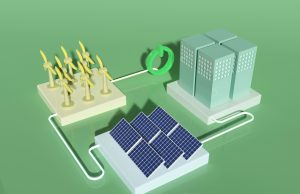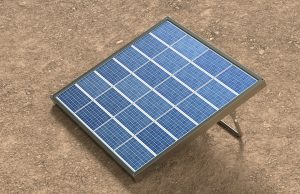When UK homeowners weigh low-carbon upgrades, there is one recurring question. Should I install a solar PV (photovoltaic) system or a solar thermal (solar hot-water) system? In this article we’ll compare the two technologies, explore their suitability in UK homes, outline key costs, savings and carbon-factors, and help you decide what works best for your property.
How the Two Systems Work
Before choosing between solar PV and solar thermal, it’s important to understand how each technology functions and the kind of energy it provides for your home. Understanding how different types of solar interact with your existing energy appliances is key when choosing between the two.
Solar PV (Photovoltaic) Systems
Solar PV, or photovoltaic, refers to the process of converting sunlight directly into electricity. Each solar PV panel contains numerous photovoltaic cells made from silicon, which generate a flow of direct current (DC) electricity when exposed to sunlight. This DC electricity is channelled to an inverter, where it is converted into alternating current (AC). Generating AC is like finding gold in the world of solar energy as that is the type of energy used by household appliances in the UK.
Once converted, the electricity can power the home immediately, be stored in a domestic battery for later use, or be exported to the National Grid through the Smart Export Guarantee (SEG), allowing homeowners to earn money for excess energy.
Modern PV systems are increasingly efficient, with many panels now achieving conversion efficiencies of 20–22%. Even during days with overcast weather, a frequent reality in the UK, solar PV systems continue to perform reliably. Because these systems generate electricity, they are remarkably versatile. They can power everything from kitchen appliances and lighting to electric vehicle chargers and heat pumps, making them a central component in a fully renewable, low-carbon home energy system.
When combined with battery storage, a solar PV array can enable a typical UK household to meet between 50% and 70% of its annual electricity demand using renewable energy. Over an expected lifespan of 25 years or more, this can equate to thousands of pounds in energy savings and a substantial reduction in carbon emissions. Installing solar PV is a win-win situation.
Solar Thermal (Solar Hot Water) Systems
While solar PV produces electricity, solar thermal systems capture the sun’s energy to produce heat. This is most commonly used for domestic hot water. A solar thermal system typically features solar collectors, either flat-plate panels or evacuated tubes, mounted on a south-facing roof. Inside these collectors, a liquid (usually a water and glycol mixture) absorbs heat from sunlight and circulates through a closed loop connected to the household’s hot water cylinder.
The heated fluid passes through a heat exchanger within the cylinder, transferring its energy to the domestic water supply. Once the heat has been delivered, the cooler fluid returns to the roof collectors to be reheated, forming a continuous cycle whenever sufficient sunlight is available.
Solar thermal systems are extremely efficient at converting solar radiation into usable heat. Under ideal summer conditions, a well-designed system can meet up to 90% of a household’s hot water needs. However, during the darker winter months, performance can fall to around 25-30%, as is expected during the dreary weather that the UK has during the winter and autumn months.
Maintenance requirements for solar thermal systems are moderate compared to that of solar PV. The heat-transfer fluid must be checked every few years to ensure it retains its anti-freeze and anti-corrosion properties, and mechanical parts such as pumps and seals require occasional servicing. When installed correctly, these systems have a long operational life and can integrate smoothly with conventional boilers or renewable heating technologies such as air-source or ground-source heat pumps, pre-heating water and thereby reducing overall fuel consumption. The integration of solar thermal systems into existing properties is often seamless and hassle free.
Key Takeaway
In simple terms, solar PV systems generate electricity, while solar thermal systems produce heat. Both capture renewable solar energy, but they serve distinct functions within the home. For UK homeowners, the right choice depends on the property’s design, available roof space, energy consumption patterns, and whether the primary goal is to cut electricity costs or to reduce heating and hot water expenses. There is no ‘right answer’ to what is the best solar upgrade as it is completely dependant on the individual property.
Key comparison criteria
To assess which works better for each property, the following criteria should be considered.
Upfront cost & installation
Solar thermal, in the UK, typically costs within the region of £3,000-£6,000 for domestic installations. Solar PV systems have higher nominal cost (depending on size, battery, etc) but the gap has narrowed.
Energy output & savings potential
Solar thermal can be very efficient in converting sunlight into hot-water, sometimes quoted at up to 70% efficiency in optimal conditions. But in UK climate, output drops in winter. For solar PV, while panel conversion efficiency may be lower, the versatility of electricity use and the ability to export surplus make it attractive.
Suitability for UK homes
UK homes often have pitched roofs, limited space and variable solar irradiation. While both technologies can work, solar PV has a broader application (electricity, hot water, and storage) and tends to integrate with other low-carbon measures (heat pumps, EV charging) more easily. Solar thermal remains useful when the major demand is hot water and plumbing allows.
Lifespan, maintenance & reliability
Solar PV tends to have longer warranties, fewer moving parts, less frequent maintenance than thermal systems (which involve pumps, cylinders, pipes).
Carbon reductions & future-proofing
Because solar PV generates electricity, which increasingly is the vector for low-carbon energy (heat pumps, EVs), installing PV aligns well with the broader move to electrification of heat and transport. Solar thermal is more narrowly focused on hot water.
Which is better for UK homes?
Given the above, the general consensus for many UK homeowners, particularly those looking for maximum flexibility and future-proofing, is that solar PV is the better choice.
That being said, solar thermal still has a place, under specific conditions. If your main priority is hot-water (rather than full electrical load), if your property already has a suitable hot-water cylinder and plumbing for a thermal loop, or if roof space is very limited, but panel/tube area for thermal is sufficient. Solar thermal is not the ‘wrong’ option for UK homes, but it is less flexible than solar PV and its uses are more niche.
For most homes aiming for low-carbon outcomes, solar PV offers the most versatile, future-proof solution: electricity generation, compatibility with battery storage, EVs and heat pumps, and robust savings. Solar thermal remains a useful technology where hot-water is the dominant need and plumbing allows for it, but its relative limitations (seasonality and narrower application) mean it is less often the single best investment on its own.
By aligning your choice of technology with your home’s specific needs, your budget and future-use plans, you can ensure that your solar investment contributes meaningfully to carbon reduction, energy-bill savings and a low-carbon future.














